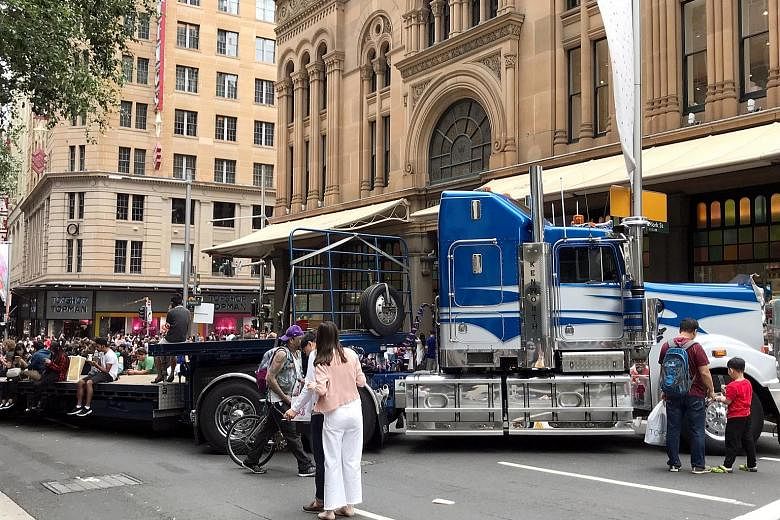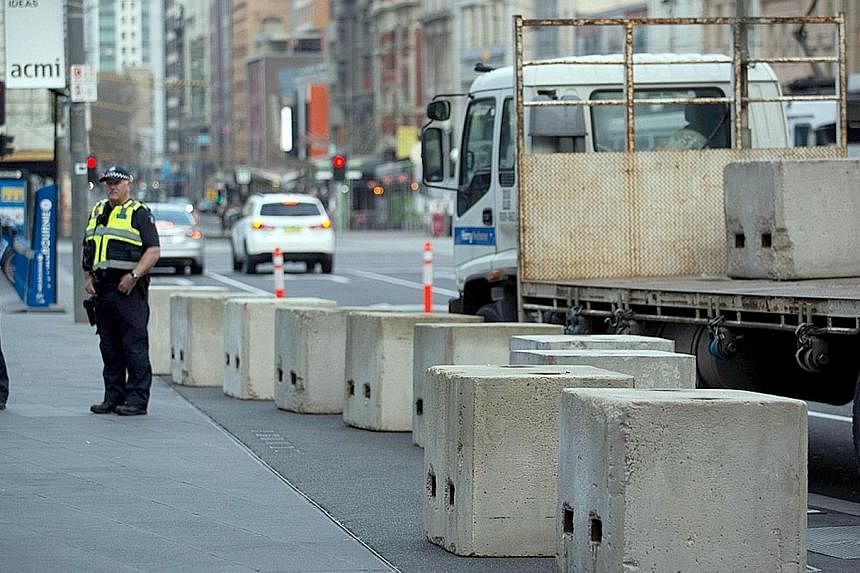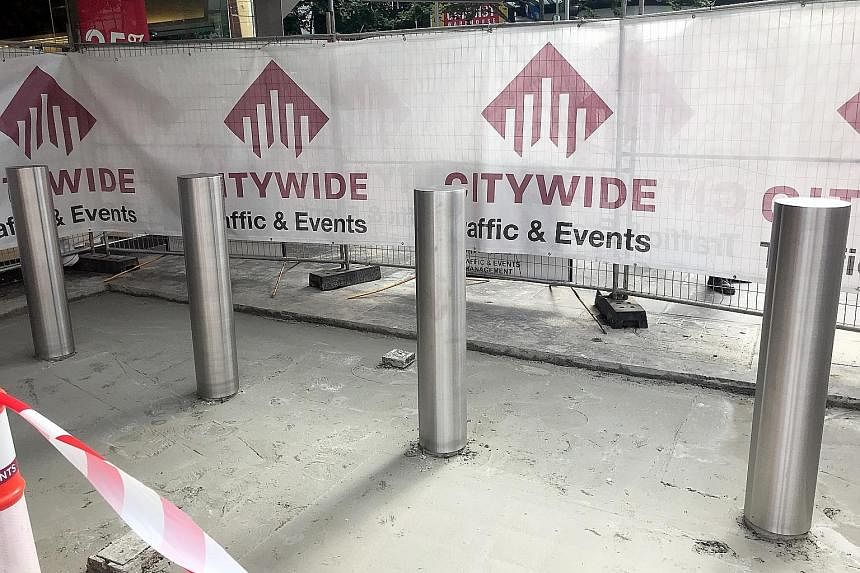Post-Christmas shoppers in the centre of Sydney were shocked to find semi-trailers and cranes parked across some of the city's busiest streets.
The obstacles, along with 60 concrete bollards and about 20 movable road closure signs, were put up as part of security measures against mass-casualty car attacks during Sydney's chaotic annual shopping frenzy on Dec 26, or Boxing Day.
Though the unusual measures prompted a front-page story headlined "Fortress Sydney" in The Daily Telegraph mass-circulation tabloid, they seemed to have a calming effect on some residents.
"It does feel safer down here this year," Mr Ray Blasioli, 20, told the newspaper. "You don't have to look over your shoulder and think you might get hit by a car or something."
The measures were not the result of any specific threat but of a horrific car attack in Melbourne last week that left 19 people injured. A 32-year-old man faces 18 counts of attempted murder for driving a four-wheel-drive vehicle deliberately into a crowd of pedestrians at one of the city's busiest intersections. Saeed Nori, an Australian citizen, arrived here in 2004 as a refugee from Afghanistan.
The Dec 21 incident came just 11 months after a 27-year-old man drove through a crowd, just metres away in Bourke Street, killing six and leaving more than 30 injured. The driver, James Gargasoulas, later claimed he was having a mental breakdown and acting under the influence of "the illuminati".
The two car attacks shocked the nation and have led to reviews of efforts to prevent such attacks.
As Sydney was coming to grips with the appearance of trucks and bollards this week, Melbourne was experiencing its own heightened security measures.
Police yesterday tested a new loudspeaker emergency system, which will warn the public of vehicle attacks, sieges, riots or armed shooters. The loudspeakers can issue four messages: Leave an area, move to an area, stay inside or seek shelter. More than 60 speakers were installed across the city earlier this month, with plans for 90 by the end of next year.
The incidents raised fresh questions about what, if anything, can be done to prevent such attacks.
Experts have proposed various urban design solutions, such as installing chicanes to slow cars down or erecting bollards, statues, high kerbs, bus shelters, fountains and other barriers.
In Sydney's Martin Place, concrete spheres have been erected to block vehicles, while Melbourne has installed aesthetically pleasing bollards that can hold plants.
Associate Professor Douglas Tomkin, a design expert who has worked with police on measures to prevent vehicle attacks in urban areas, said the police have been testing larger and stronger barriers. This included experimenting with four-wheel-drives travelling at 80kmh into bollards.
"There are lots of different ways to make cities safer in these situations," Prof Tomkin, from the University of Technology Sydney (UTS), told The Conversation website. "It is dependent on the context."
Some of the barriers put up after the recent attacks have come under fire for being aesthetically jarring.
Residents in the exclusive apartment building alongside Sydney's Opera House have complained that their property prices may be affected by a series of ugly barriers lining the waterfront promenade.
"It looks a mess, and the barriers are as ugly as sin," resident John Henderson told The Australian.
But such measures are here to stay, and only likely to increase.
"I don't think anybody likes seeing trucks being used as barricades... but what we have seen on Boxing Day is the reality of what we need to be prepared for," New South Wales counter-terrorism minister David Elliott told Channel Seven.



